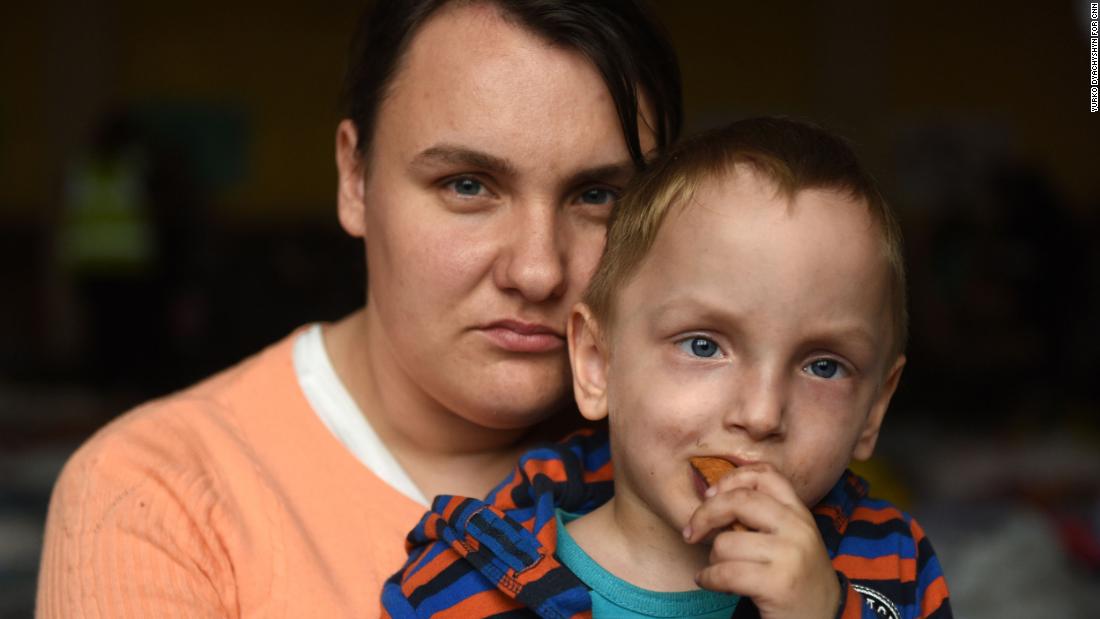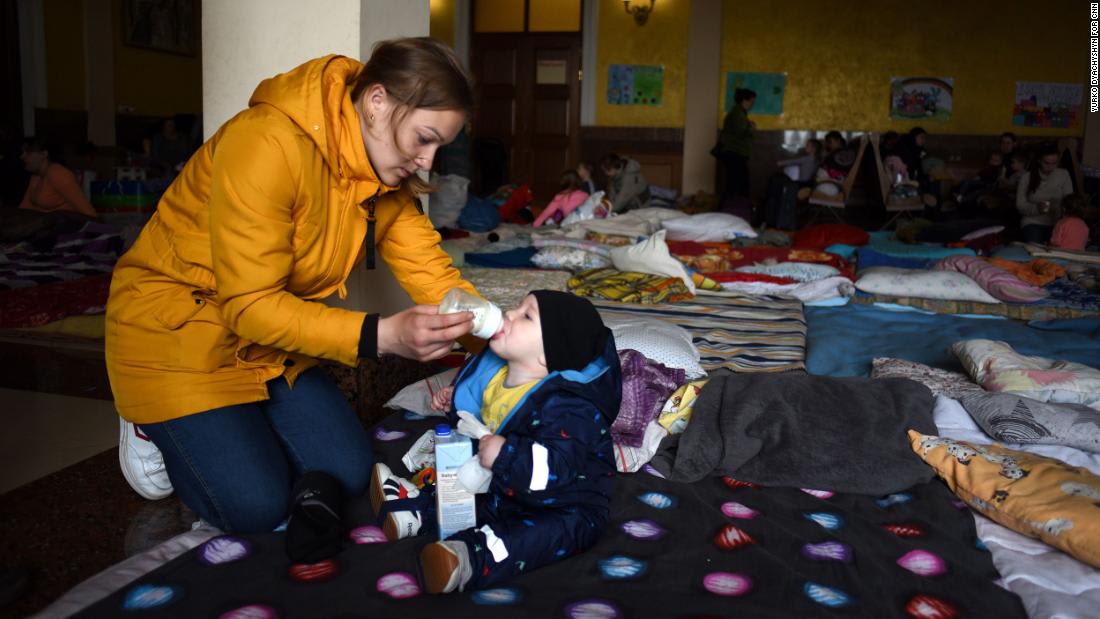At the train station in Lviv, on the westernmost edge of Ukraine, women are at a physical and psychological crossroads.
After arriving in the city, now a waypoint for displaced people, humanitarian aid and weapons, they’ve had to ask themselves a set of daunting questions. Where should we go next? Will my children be safe there? How long will we stay?
In the back of their minds is a gnawing fear: Will we even have a home to return to?
If there’s one thing to know about the dilemma they face, it’s that many are having to make snap decisions about their family’s future alone.
Military conscription rules in Ukraine mean that men between the ages of 18 and 60 are blocked from leaving the country. And, in any case, many have chosen to sign up and join the fight.
So while millions of Ukrainians have fled Russia’s invasion since it was launched by President Vladimir Putin more than two months ago, almost all of those who have crossed the border are women and children. They make up a staggering 90% of Ukraine’s refugees.
Mothers have largely borne the brunt of the migration crisis, picking up the pieces after their families were torn apart, caring for children and elderly parents. CNN spoke with several who had uprooted their lives in the wake of the war and were weighing whether it was time to take their families back to Ukraine.
One woman, Liudmyla Sobchenko, a 28-year-old from the Zhytomyr region northwest of Kyiv, spent three weeks in Poland with her young son and mother before deciding it was time to come home.

I won’t say it’s bad there in Poland … But it’s not our land,” she said.
Since late March, when CNN visited the station in Lviv, the flow of Ukrainians back to the country has continued to increase and is now about 30,000 a day, according to Andrii Demchenko, a press officer for the State Border Guard Service of Ukraine. “We have no right to ask the purpose of the trip, but many women shared that they no longer want to stay abroad,” he told CNN on Tuesday.
Some of the most heart-wrenching, early images of the war were from railway stations across Ukraine. Crowds clambered into carriages, babies held aloft. Couples embraced in passionate, desperate goodbyes. Little hands and faces pressed against foggy windows as fathers stood alone, sobbing on platforms.
Many passed through Lviv station before traveling on to neighboring Poland, or further afield. Hour after hour, a wave of women and children would disembark. The names of the cities and towns they left — Sumy, Kyiv, Kharkiv, Kherson — created a constellation of suffering that criss-crossed Ukraine, reflecting in real time where fighting had flared.
Weeks after the initial exodus, the grand Art Nouveau building, two miles from the city’s old town, was still busy with families on the move. But not all were heading west. Some, like Sobchenko, were beginning to return.
Read the full report here:
